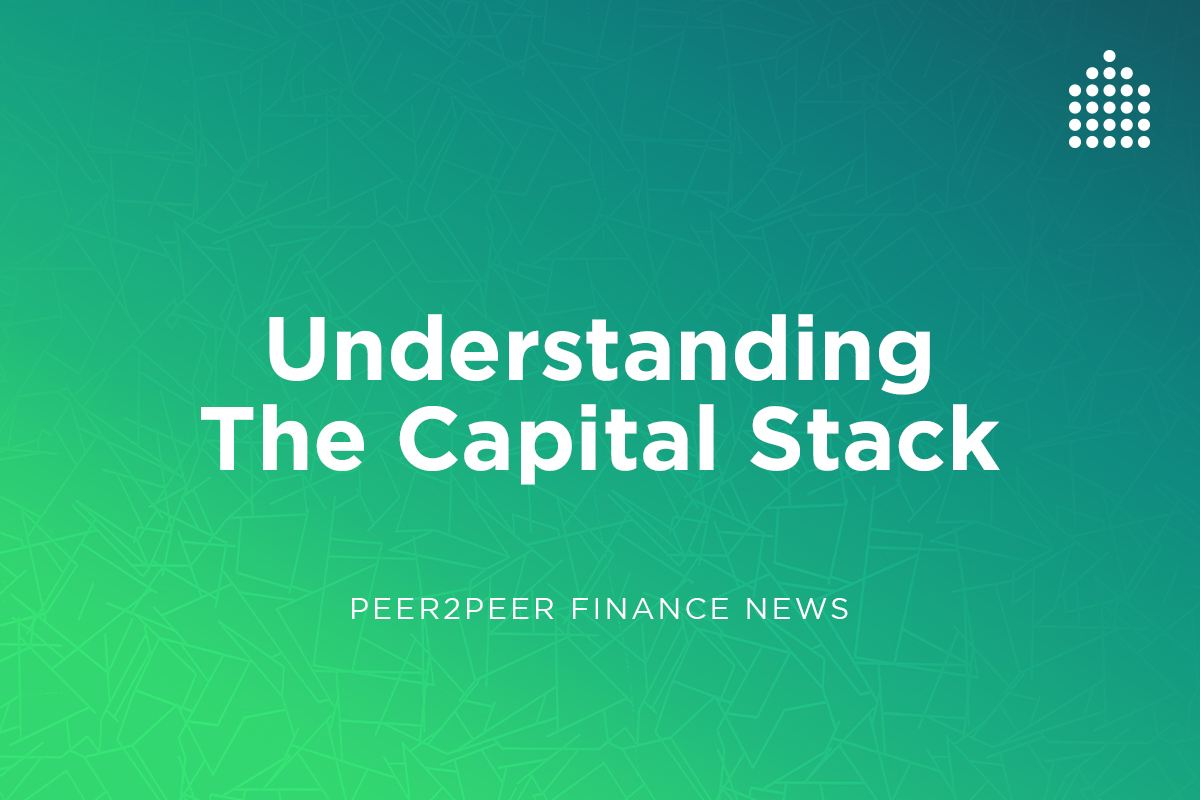Borrow
Case Study
Podcasts
Awards
About
SECURITY is the most important factor that should be considered when lending against anything, whatever the asset class. Property is a strong, reliable and in-demand asset class which, unlike future cashflows of a business or an individual, will always have a value. Security provides a legally-binding assurance that in the event of a default on the loan contract, the property could be sold or refinanced to repay lenders.

But for Mike Bristow, chief executive and co-founder of CrowdProperty, the word ‘security’ can obscure a significant amount of risk. Instead, he prefers to use the term ‘capital stack’, and the specific elements of the capital stack when explaining security and risk to retail investors.
So what is the capital stack? In short, it is the tiers of beneficiaries behind an asset, in order of creditor hierarchy. At the top, or the most risky element of the capital stack, is the equity. But Bristow warns that this can be a “hyper volatile” holding.
“If there’s a £1m asset with £700,000 of debt, then the equity value of that asset is effectively worth just £300,000,” explains Bristow. “But if the value of the asset falls by 30 per cent, then equity value reduces to zero.
Next, there is the mezzanine debt tranche and finally, at the most secure end, the senior, first charge secured debt tranche. CrowdProperty solely provides senior debt and insists on holding the first-charge security on every property on its loan book. This ensures that if the loan defaults, the first people to be repaid will always be CrowdProperty’s lenders. By taking the first charge, the platform is also able to take control of the asset and recovery processes and recover capital and accrued interest on behalf of its lenders before anyone else has any rights on recovered funds.
Mezzanine debt – which is sometimes second-charge secured – will only be paid after the first charge holders have recovered their capital and interest and recovery costs settled.
“There are a couple of really important considerations around second-charge security that render it substantially higher risk than first-charge security,” says Bristow. “Firstly it’s junior to the first charge, and secondly the second-charge security almost becomes equity-like in a recovery situation. The first charge holder can recover the capital plus the interest owed, plus the recovery fees, but the second charge is not only junior to the capital but also junior to the interest accrued on the first charge tranche and the cost of recovery.”
To date, CrowdProperty has paid back 100 per cent of its investors’ capital and interest, even during some difficult projects, which underlines the fundamental importance of deep property expertise in property lending. Bristow believes that enviable track record is due to its deep expertise and an insistence on maintaining its place in the most secure position in the capital stack, as well rigorous and consistent credit policies that result in average first-charge secured lending exposure of 60.6 per cent LTV of the initial purchase and 52.6 per cent loan to GDV across CrowdProperty’s history of over five years.
However, Bristow is concerned that there are many other P2P property investors out there who do not completely understand the disparity of risk that the capital stack contains.
“We think that many lenders underestimate the increasing risk between those different levels in the capital stack,” warns Bristow. “And we also think that the pricing for investors doesn’t necessarily reflect that substantial increase of risk.
“We’ve been in property for decades and decades, so it was quite an easy decision to say that our platform will always be first charge security only, because we really understand the risks with second charge and with equity.”
By relying on the logic of the capital stack and such deep expertise, CrowdProperty has managed to do what many other P2P property lenders are struggling with – deliver attractive, secured returns to investors and scale whilst maintaining their tough due diligence standards and maintaining their exceptional track record.
Our CEO, Mike Bristow, regularly writes articles for media outlets. This article " Understanding the capital stack " was published in Peer2Peer Finance News on July 2019.













As featured in...



































